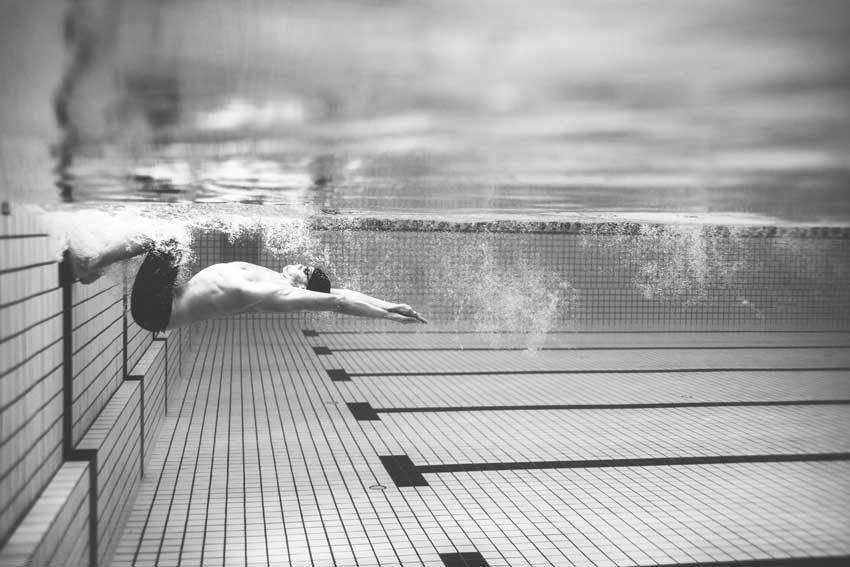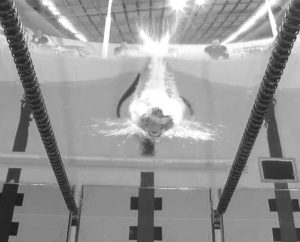We are going to take a look at an article by (Wylegala et al 2007) published in the European Journal of Physiology, which looks at the mechanisms of how IMT improves surface and underwater swimming to exhaustion. This may include Olympic swimming disciplines, Tri-athalon, Free-diving, Surfing, Underwater hockey along with other aquatic sports.

In the first post, we have looked at how the breathing muscles fatigue during short maximal exercise and long endurance events. What happens when we go in the water, and how does this change the fatigue of the breathing muscles?
When we inhale the breathing muscles contract, which causes air to rush into the lungs. You will also notice how our chest expands, this is due to muscle action expanding our rib cage, these muscles must overcome a force for this to happen. Well, when our chest is submerged the breathing muscles have to overcome the force of the water putting pressure on our chest as well (hydrostatic force), which leads to an increased work of breathing for athletes who are submerged when exercising. I have stated in previous posts, swimmers generally have a higher baseline testing value than land based athletes, and this is one of the reasons why.
To be clear the breathing muscles have to do work to allow us to take a breath!
So the breathing muscles now have to expand the chest and belly AND overcome the force of the water, this may lead to increased fatigue levels. In essence the work of breathing becomes higher when someone is submerged in water, so how does this affect performance?

Lets look at the study and see what they did…..
They took 30 experianced male swimmers and completed a RCT intervention to see if training the breathing muscles would increase surface swimming time to exhaustion and underwater swimming to exhaustion with SCUBA. They had groups who trained the breathing muscles and a group who undertook only light breathing training and compared the results.
The thoughts of the experimenters were, the breathing muscles may begin to fatigue and may contribute to early whole body fatigue, which will reduce performance on and below the water.
Results:
Subjects who trained the breathing muscles saw an increase in strength of up to 15%, considering the training protocol they used, this is on the lower side of the training effect I see today with improved training techniques. This was in 2007.
For the surface swimming endurance test, the subjects who trained the breathing muscles saw an increase of 35% longer time to reach fatigue, compared to the group who did not train the breathing muscles. Also remember, training protocols for breath training are only 5min/day in the early phases, and even less in a maintenance protocol.

Subjects who trained the breathing muscles and undertook the SCUBA endurance test saw an improvement of 66% time to exhaustion after they trained for 4 weeks. This test, subjects were placed 1.5m underwater and were asked to swim at a constant velocity with fins and SCUBA gear until they could no longer keep the pace, ie: until exhaustion.
A closer look at the results and with breath training we expect to see:
- Increase in breathing volumes during exercise
- A reduction in number of breaths taken during exercise
So to conclude, breath training saw an increase in performance for both surface swimming and SCUBA swimming in time to exhaustion. The benefit was larger for the completely submerged SCUBA test, which earlier discussion may explain why.
If we make the breathing muscles stronger, they use less force to overcome both the chest expansion and hydrostatic force needed to take air in. Therefore, they do not fatigue as easily and this allows athletes to exercise at a constant rate for a longer period of time.
Bringing Science to the Breath.